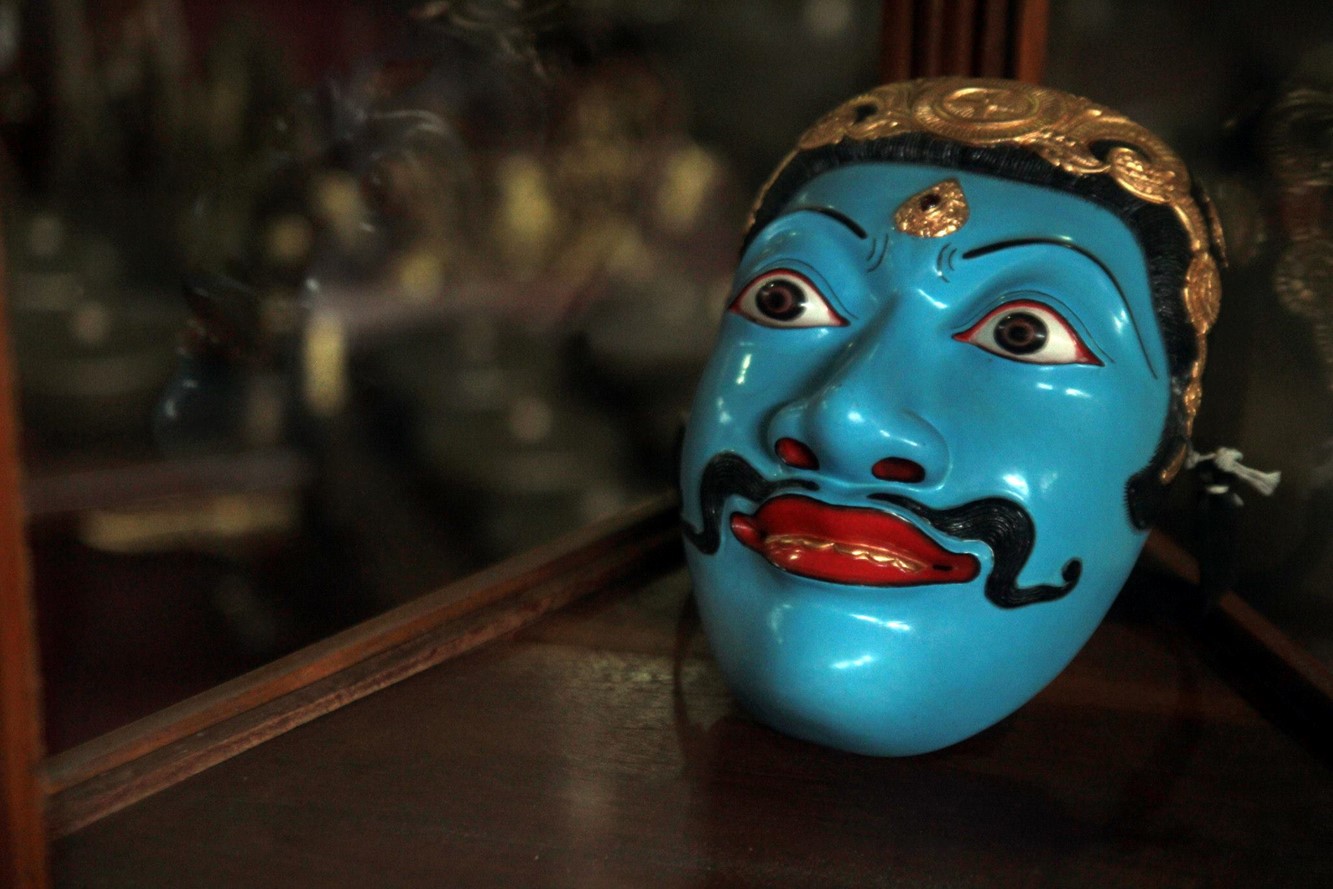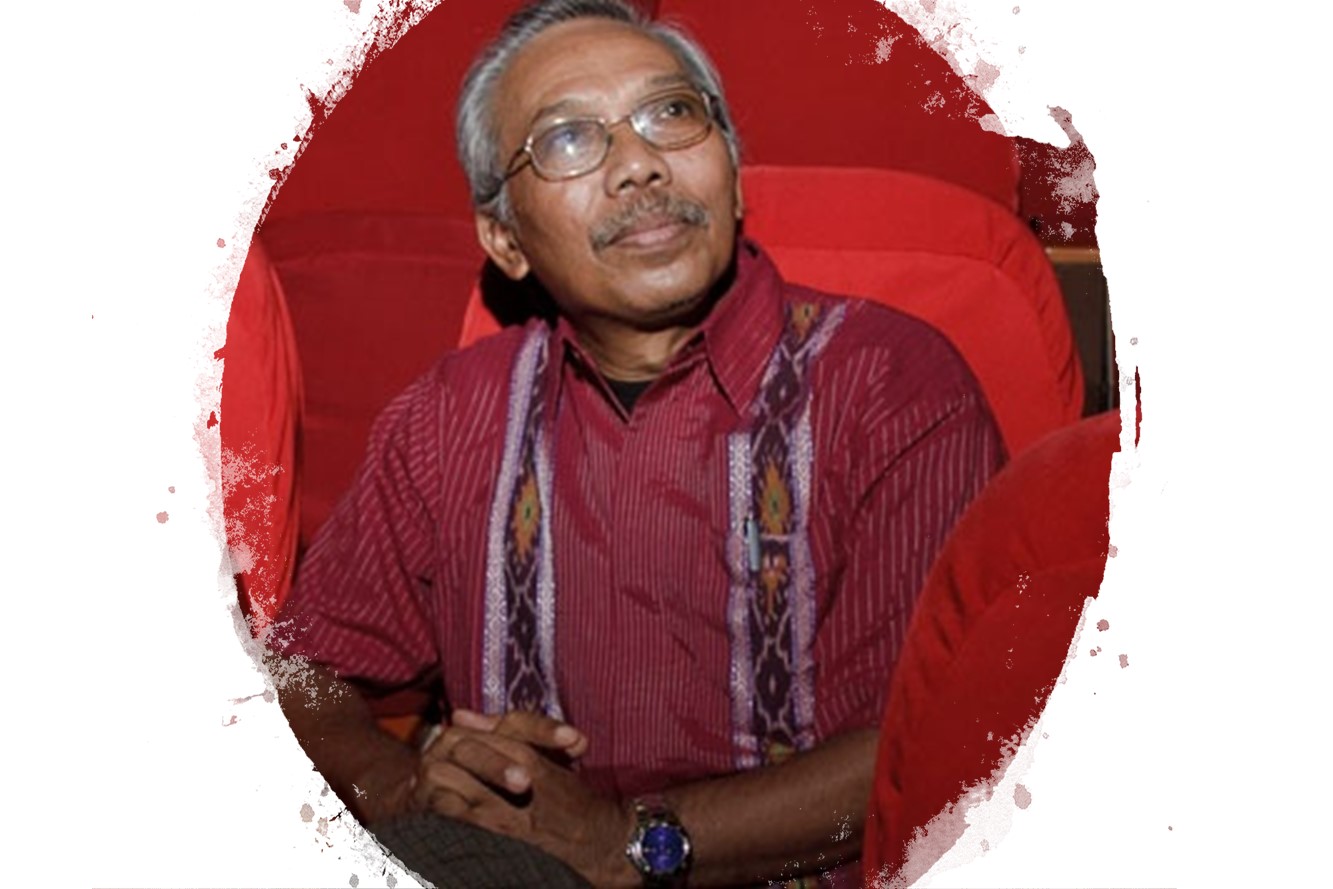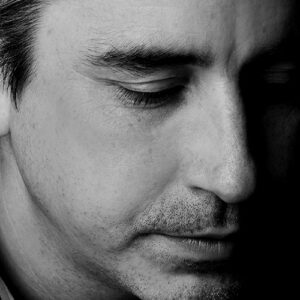
In 2014, I had the pleasure of participating in a cultural performing arts exchange in Bali, Indonesia, as part of the East15 Acting School Directing MFA program. As a working director for many years prior to my MFA, to say that my time in Bali influenced my practice would be an understatement.
Fall 2019, I was able to return to Bali to develop future collaborative pathways. My host for this trip was noted Wayang (shadow puppetry) puppeteer Professor I Nyoman Sedana. I would also work with his students at ISI Denpasar in a workshop exercise researching cross cultural exchange.

The Traditional Balinese Performing Arts Practices are truly unique. Due to a historical tragedy and a tremendous act of bravery by Balinese leadership in colonial times, the Balinese society was protected from the cultural repression commonly associated with European colonization. As a result, the performing arts practices such as Wayang Kulit reach back over a thousand years.
5 years ago, I sat with an international group of East15 MFA candidates in a circle with Professor I Wayan Dibia at the GEOKS Art Space in Singapadu learning theories of Balinese Performing Arts. The conversation expanded and I remember leaving the class that day feeling not only had I learnt a great deal about local creation practices, but I had also learnt more about contemporary western performing arts than I had in full semesters in London or New York.
I had WhatsApped Professor Dibia on my arrival, and we were able to grab a quick breakfast before a workshop rehearsal.
Since the 1970s, he has innovated new works through experimentation with traditional elements of Balinese performing arts. His formal education includes a Ph.D. in Southeast Asian Performing Arts from UCLA and from 1997 to 2002, he served as the Director of ISI Denpasar. He has written a number of books and articles (some listed below), both in English and Bahasa Indonesia on Balinese Performing Arts. As an artist, he has toured extensively across Asia, Europe, Australia, and North America. Outside Bali, Professor I Wayan Dibia has been a profound influence on many western practitioners.

I had been aiming to interview him with a set list of questions. However, the conversation turned into one of those conversations with senior artists that I adore. We discussed his work in New York, London and Asia. He told me about his experience playing Claudius in director Ong Keng Sen’s 2002 international collaboration of Search Hamlet at Kronborg Castle, his long friendship with Julie Taymor, and how a particular scene from Peter Brook’s 1985 The Mahabharata still sings to him across time.
We discussed international exchange and the challenges faced in ensuring respect and understanding in the process (exchange versus taking / copying and re-appropriating); about finding the communication language of the artistic team; the strengths of physical communication of dance and movement between artists versus the different spoken versions of English or French often used in international exchange.
Considering both the outdoor nature and spiritual significance of much of the Balinese performing arts, this is a matter of interest to Balinese practitioners. I would argue this is an essential question for western practitioners as well.
We discussed the future of Balinese practice and how the majority of modern or contemporary theatre follows western English language models, and how to find space in Balinese contemporary theatre that is unique to the Balinese people in form, content and expression – a challenge not exclusive to Balinese artists.

We discussed how Balinese directors and choreographers work similarly to a composer I had observed working Ubud, working from memory in active conversation with their artists.
As we drove back to ISI Denpasar, we talked about Taksu.
In western terms we might call it the “creative state”, “it”, the “zone”, the “moment”, or, in pop culture terms, “the force”. It is that place when you are at your best and it just flows.
Whereas in the west, we tend to apply these ideas to artists or athletes, for the Balinese it is in every profession and aspect of life. Taksu can be obtained by anybody. A teacher who inspires their students, a doctor who successfully heals their patients, an artist who captures truth and beauty, all show the presence of Taksu. Not solely applied to human beings, Taksu is also found in objects and the land. A mask may contain Taksu or a fertile rice field. Shrines to Taksu can be found in most households across the island.

If the Russian and European performing arts have recorded the science of the creative state (Stanislavsky, Meyerhold, Checkov, Knebel, etc.), the American Acting methods (Strasburg, Meisner, Adler, Hagan, etc.) have recorded the psychology of the creative state, the Balinese culture has created a spiritual path of the creative state.
There is no fixed route towards Taksu. It can be achieved through the spirituality of prayer, ritual and offering; the practical of mastering the intellectual, technical, physical and moral aspects of one’s work; working to be in tune externally and internally; an element of charm; and the gods conferring it.
The Balinese believe in The Rwa Bhineda, literally meaning “the two opposites”. Everything exists in duality such as Birth/Death, New/Old, Good/Evil, etc. If balance is achieved, it is only temporary. Joy will be followed by sadness or vice versa. Like the universe, human beings must constantly adjust to find equilibrium.
Taksu is no different.
Once found, it may last forever, it may come and go, or it may vanish like the wind only to be sought again.
If you are interested in Balinese Performing Arts some suggested reading includes:
– Balinese Dance, Drama & Music: A Guide to the Performing Arts of Bali by Professor I Wayan Dibia (Author), Rucina Ballinger (Author), Barbara Anello (Illustrator)
– Performance in Bali (Theatres of the World) by Leon Rubin (Author), I. Nyoman Sedana (Author, Contributor)
– Bali: Sekala & Niskala: Essays on Religion, Ritual, and Art by Fred B. Eiseman Jr. (Author)
In Search of Taksu: Cross Cultural Explorations in Bali and Art & Power of Change
In Search of Taksu 2: Creation and Community in Balinese Performing Arts
In Search of Taksu 3: Bridging Cultures & Past and Present in Balinese Performing Arts


Jack (he, him) is an award-winning devisor, director, translator, and creative producer whose work and practice have taken him across Canada, Europe, the United Kingdom, and around the world. Projects have ranged from contemporary devising, multi-disciplinary, cross-cultural, and multi-lingual experiences to new works & texts, contemporary approaches to classical theatre and main stages. Shows under his direction have garnered over thirty theatre award nominations with many wins. He trained at leading international theatrical institutions including Circle in the Square (NYC, USA), GITIS The University of Performing Arts (Moscow, RU), ISI Indonesian Institute of the Arts (Bali, INA) and received his Masters in Fine Arts from the renown East 15 Acting School and University of Essex (London, UK).
Read Full Profile© 2021 TheatreArtLife. All rights reserved.

Thank you so much for reading, but you have now reached your free article limit for this month.
Our contributors are currently writing more articles for you to enjoy.
To keep reading, all you have to do is become a subscriber and then you can read unlimited articles anytime.
Your investment will help us continue to ignite connections across the globe in live entertainment and build this community for industry professionals.